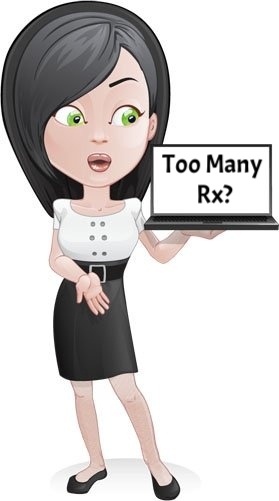Children and Adolescents | Are Psychiatric Drugs Being Overprescribed?

 Mental Health | Researchers found prescribing rates of stimulants and antidepressants to be "consistent with known epidemiologic patterns”.
Mental Health | Researchers found prescribing rates of stimulants and antidepressants to be "consistent with known epidemiologic patterns”.
Findings from a study published in the Journal of Child and Adolescent Psychopharmacology showed some psychiatric drugs may be under-prescribed in children and adolescents, challenging the notion that these drugs are overprescribed.
Study author Ryan Sultan, MD, from Columbia University Irving Medical Center, and colleagues sought to better understand the "widespread public and professional concern" regarding psychiatric drugs being overprescribed for U.S. children and adolescents.
The team evaluated annual prescription patterns for 3 common psychotropic classes (stimulants, antidepressants, and antipsychotics) to patients aged 3 to 24 years from the IMS LifeLink LRx National Longitudinal Prescription database (N=6,351,482).
Researchers compared prescribing patterns with known prevalence of attention deficit hyperactivity disorder (ADHD), anxiety disorders, and depression. Moreover, the percentage of prescriptions filled under each class were stratified by gender, age, and prescriber specialty.
The total yearly percentage of prescriptions filled by the study population for any of the 3 medication classes were 0.8% for ages 3–5; 5.4% for ages 6-12; 7.7% for ages 13–18, and 6.0% for ages 19–24. Use of stimulant medications was highest for older children with a 5.7% prevalence among 11-year-olds. Use of antidepressants rose with age and was greatest among young adults, with a 4.8% prevalence among 24-year-olds.
The annual percentages for antipsychotics, however, were lower than stimulant or antidepressant rates across all age groups; with a peak during adolescence (age 16 = 1.3%). In addition, "Annual stimulant and antipsychotic percentages for males were higher than corresponding percentages for females, but converged for young adults."
Antidepressant (22.2–53.2%) and antipsychotic medications (51.7–70%) were primarily prescribed by psychiatrists and child psychiatrists while stimulant medications were less frequently prescribed (30.4–36.2%).
"Our results show that, at a population level, prescriptions of stimulants and antidepressant medications for children and adolescents do not appear to be prescribed at rates higher than the known rates for psychiatric conditions they are designed to treat," said Dr. Sultan. "These findings are inconsistent with the perception that children and adolescents are being overprescribed."  Overall, the prescribing rates and age/gender distributions of stimulants and antidepressants were "broadly consistent with known epidemiologic patterns" of the respective ADHD, anxiety, and depression indications, the authors concluded.
Overall, the prescribing rates and age/gender distributions of stimulants and antidepressants were "broadly consistent with known epidemiologic patterns" of the respective ADHD, anxiety, and depression indications, the authors concluded.
Antipsychotic prescribing patterns, however, proved more complex and may be due to the range of approved and off-label conditions associated with this drug class.


